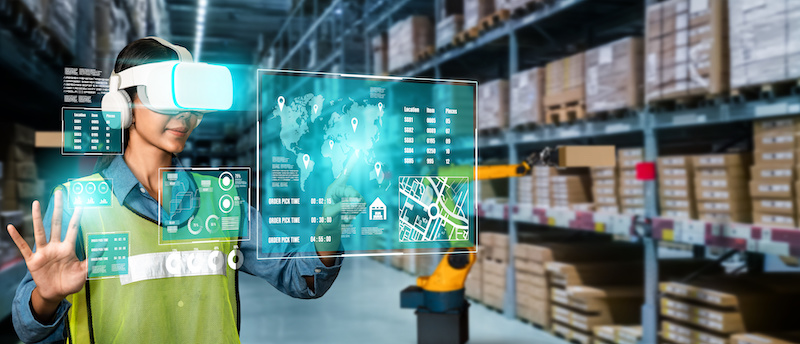
Warehouse Automation is Creating Bigger Opportunities In Logistic Sector
E-commerce businesses are becoming increasingly popular, especially after the Covid-19 pandemic. To meet the rising demand for e-commerce volumes, the e-commerce industry along with the logistic companies are shifting to automation.
There is a mutual growth between the eCommerce businesses and logistic industries, and it is a common trait.
Automation is nothing new for the logistic industry. Even the use of steam engines during the industrial revolution can be labelled as automation to a large extent.
However, with the advancement in technology, a new form of automation has emerged in the form of robotic pickers and packers.
Also, automation is being employed in different areas of the logistic industry. One such automation is warehousing automation which has extremely high potential, especially for logistic companies like VRL and DTDC.
In addition to the logistics industry, warehouse automation is also highly employed by the transport companies too.
How Does Warehouse Automation Work?
Warehouse automation functions by employing both software and technology which include but is not limited to sensors and robotics which are used to automate tasks.
Warehouse automation is possible by using software like inventory management software and warehouse management software.
The warehouse management system is particularly important because it is designed to automate the manual processes and data capture to control the inventory and support the different kinds of data analysis terms. Everything comes together, to improve the efficiency of the supply chain functions.
The different categories of warehouse automation are basic warehouse automation, warehouse system automation, mechanized warehouse automation and advanced warehouse automation. As the name itself suggested, each of these automation is an advanced version of the previous category, respectively.
How is Warehouse Automation Creating Bigger Opportunities for the Logistics Sector?
Warehousing automation has solved many problems and at the same time is creating opportunities for the logistic sector to improve its efficiency. Warehouse automation presents opportunities in the logistic sector in the following ways.
Firstly, the goods to personal fulfilment are one of the most popular applications of automation in which vertical lift systems and conveyors are used to increase the efficiency of warehouse picking. With the effective application of goods to personal fulfilment, any company can easily double the speed of warehouse picking.
The second most common application of warehouse automation includes automatic guided vehicles that run within the warehouse. These vehicles are designed to work within the warehouse with the help of sensors, strips or wires.
They have to navigate through a fixed path to move along the warehouse. These automatic guided vehicles are helpful in cutting down manual movement. However, the real benefit of automatic guided vehicles can only be utilized in large warehouses instead of the small ones.
Thirdly, robots can be a part of warehouse automation to ensure the safety of workers. Warehouse operations are many times involving risky activities. Such risky activities can include work like handling heavy items and operating with toxic products and high-traffic environments.
Robots in warehouse automation can be employed to work with heavy products and a toxic environment. This reduces the risk to the employees.
Autonomous mobile robots also play an important role in warehouse automation. Most of the time, autonomous mobile robots are more flexible than automatic guided vehicles. These autonomous mobile robots are designed with an advanced laser guidance system.
Their primary job is to remove obstacles from the way in warehouses that have a busy working environment because of plenty of human traffic. They work to make a safer working environment in a dynamic ecosystem.
Also, warehouse automation reduces the extent of the error. For instance, robots that are wired to function as barcode readers. The robotic barcode readers make fewer errors in comparison to manual barcode reading.
Most of the warehouse automation elements ensure lesser error. The less error creates an inventory that has lower loss and waste. Most of the inventory fulfilment issue arises due to human error as a result of manual process management. Warehouse automation highly eliminates the risk of such errors.
Even though warehouse automation solves quite a lot of problems and creates plenty of opportunities, automating a warehouse is not an easy job. Automating a warehouse requires proper planning.
However, it is worth investing in warehouse automation because it creates better utilization of resources, reduces the operational and labor cost, optimizes the warehouse space, improves the warehouse environment and reduces inventory loss.
